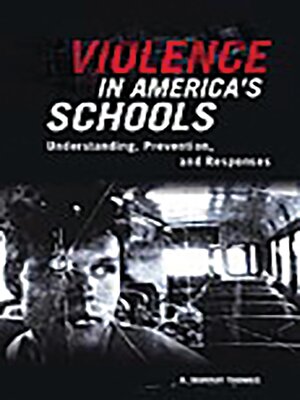
Sign up to save your library
With an OverDrive account, you can save your favorite libraries for at-a-glance information about availability. Find out more about OverDrive accounts.
Find this title in Libby, the library reading app by OverDrive.



Search for a digital library with this title
Title found at these libraries:
| Loading... |
The problem of violence in schools has not gone away despite radical reductions in violent crimes throughout the country over the last decade. Students continue to harrass, haze, and harm each other in a variety of ways, disrupting classrooms and whole schools. In the wake of the Columbine massacre, many focused on the worst kind of school violence: deadly assaults with dangerous weapons. But other forms of violence are more persistent, common, and just as destructive in many ways: fighting, sexual abuse, carrying weapons to school, vandalism, and assorted other crimes that happen behind the closed doors of elementary, middle, and high schools across the country. The consequences range from violent victimization and death, to the disruption of learning and fear among student bodies and teaching staffs. Here, Thomas provides a foundation for understanding why the violence occurs, preventing it from happening, and treating both offenders and victims after it happens.
Using scores of case descriptions to illustrate the types of school violence and their treatment in recent years, the author skillfully shows readers how the problem of violence and crime in schools is an insidious issue that cannot go untreated. He offers both tested and proposed methods for dealing with a host of violence issues and a guide to planning treatment of the problem and its associated consequences. He answers the questions: What are prominent types of violence in American schools? What conditions contribute to those types of violence? What methods can be applied in an effort to reduce school violence? Readers will come away from this book with a greater understanding of the scope of violence in America's schools, and the myriad ways of addressing it.
Using scores of case descriptions to illustrate the types of school violence and their treatment in recent years, the author skillfully shows readers how the problem of violence and crime in schools is an insidious issue that cannot go untreated. He offers both tested and proposed methods for dealing with a host of violence issues and a guide to planning treatment of the problem and its associated consequences. He answers the questions: What are prominent types of violence in American schools? What conditions contribute to those types of violence? What methods can be applied in an effort to reduce school violence? Readers will come away from this book with a greater understanding of the scope of violence in America's schools, and the myriad ways of addressing it.







